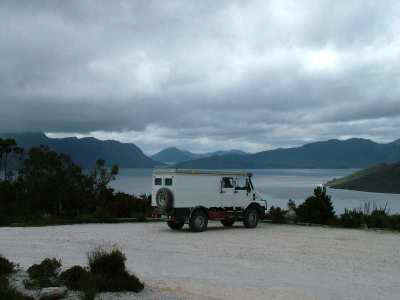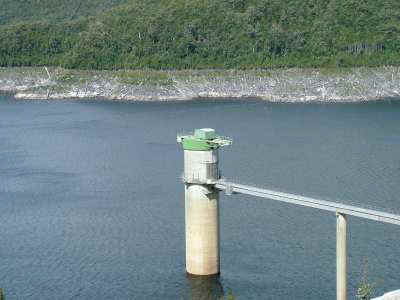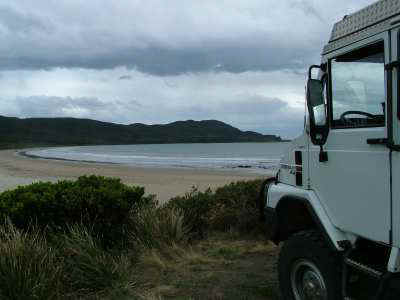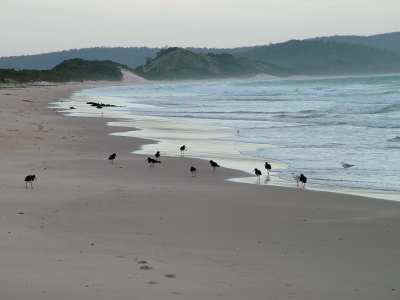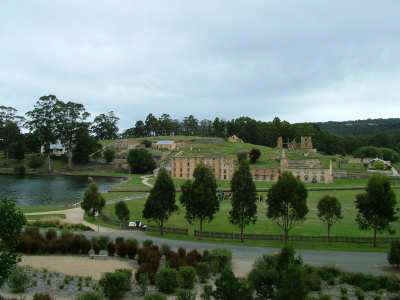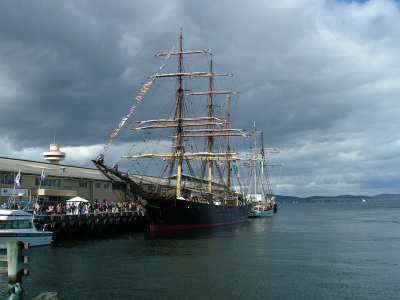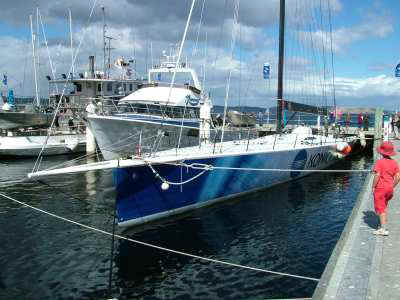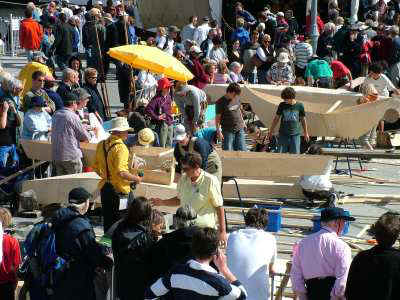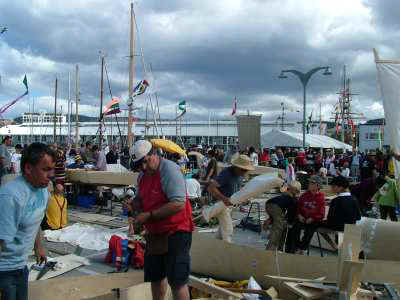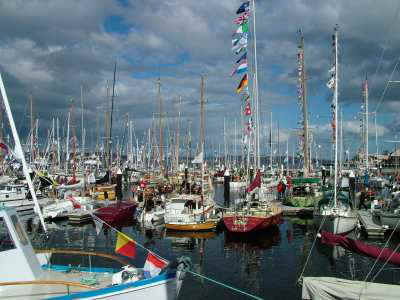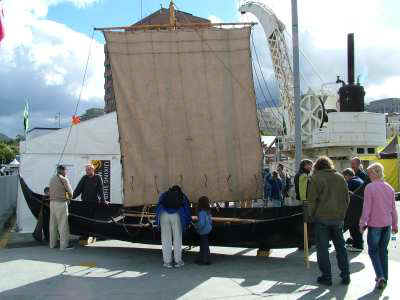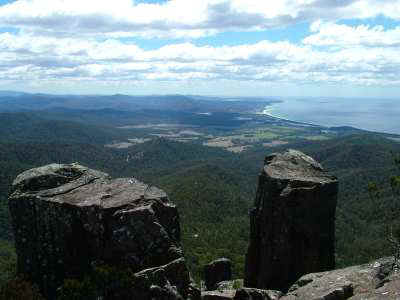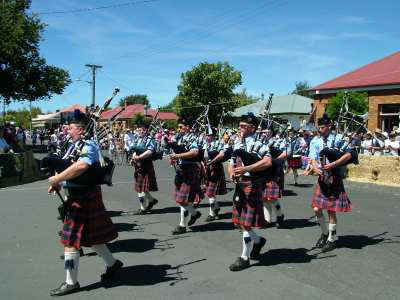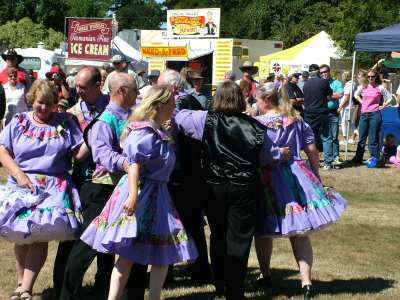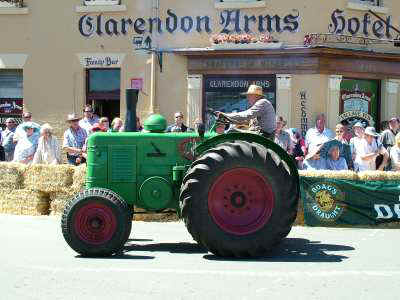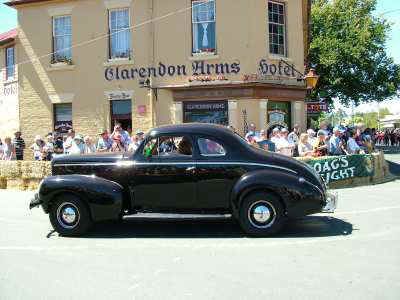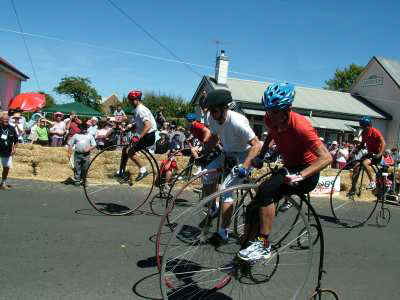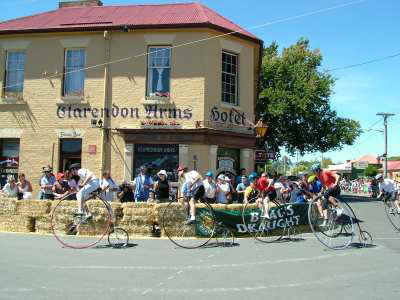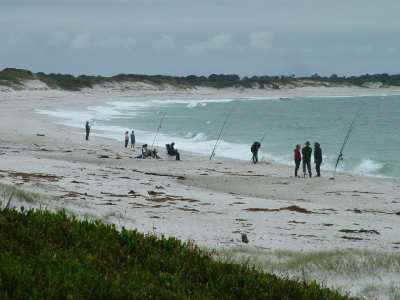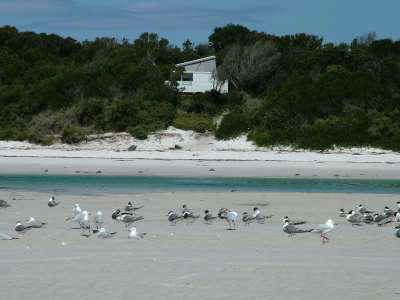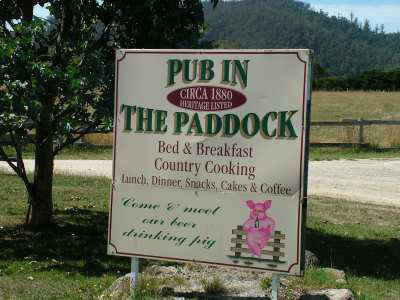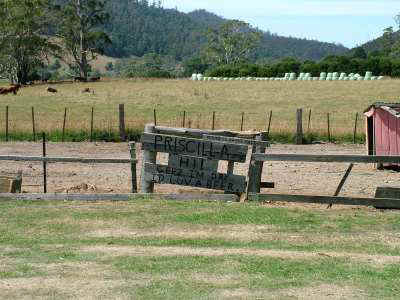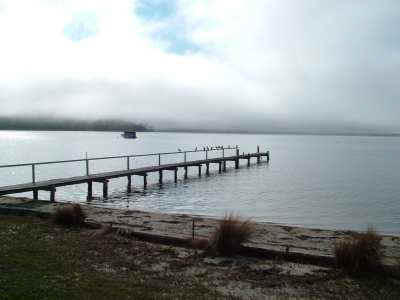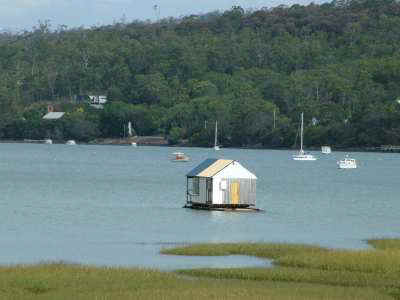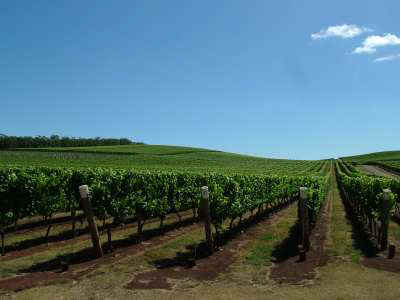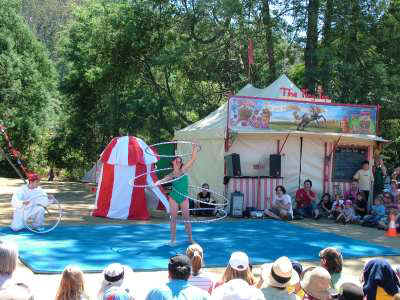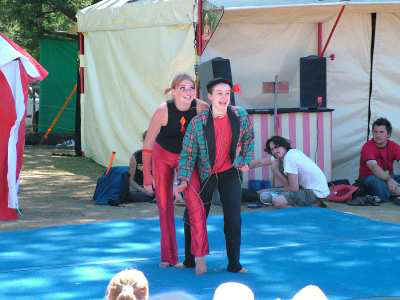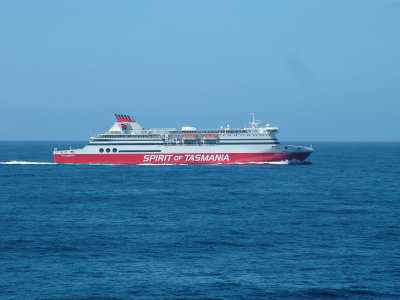| Home | |
After a ten days lasting meteorological anomaly (NO RAIN!) we got a few drops in the last couple of days. We want to appreciate them properly by writing down this little poem concerning the Tasmanian weather:
Drizzle Grizzle
Dirty days hath September,
April, June and November,
February is quite alright,
It only rains from morn till night.
All the rest have thirty one,
Without a single ray of sun,
And if any month had thirty two,
They'd be bloody raining too.
But now back to everyday travelling. Here's the result of the Tasmanian energy discussions, or rather fights, in the seventies. Lake Pedder as seen from Red Knoll Lookout. Lake Pedder was once a rather small lake and know holds 27 times the water of Sydney Harbour. (remark of the editorial office: This view point didn't get it's name from the author's nose)
In this giant shaft the water drops 140m from the lake onto the generator turbines.
View on Hobart from Mt. Wellington. We like the capital of Tasmania, it's absolutely a place to stay forever. It has about the same number of inhabitants as our former hometown Ulm. It suits everyone's needs, whether you're interested in cultural life or gourmet cuisine and of course if you're an outdoor enthusiast.
Total remoteness is only half an hours drive from Hobart. If you take the ferry to Bruny Island it's more likely to meet penguins than human beings.
During incubation you may be dive bombed by an angry Pied Oystercatchers fiercely protecting it's nest. But currently they are just looking for little crabs.
Back in Hobart. The fist Bremach at Webster's IVECO Service. The hoods of the huge trucks are bigger than our hole little bus. Still our vehicle attracts some interest. The nice blokes working here are happy that we like their island (which is of course "the main island", while Australia is called "the north island" or "the other island"). They give us many hints for the rest of our trip.
Port Arthur on the Tasman Peninsula is the historical highlight on Tassie with more than 200.000 visitors per year. The Tassies are proud about that almost all of their ancestors have been convicts. The size of the car park and the number of tourist busses are corresponding to this fact. Fourteen dollars entry fee per adult sounds a bit too expensive for us, to have a look at a few ruins from the 18th century. Especially because one of the crew members lived in a ruin of the 17th century for almost 10 years! So we just take the free photo from the view point, and then move on to the remote places on the peninsula.
The north west corner of the Tasman Peninsula is truly remote. There's not only camping but you can also have a look at the remnants of the coal mining where the more nasty-minded of the convicts had to work. Everything for free of course. The possums are protected in Australia, but many people think that basically they are a pest. Not for nothing, our friend Dave calls them "bastards", they eat all the bird seed. Probably most of the kiwis (certainly our friend Grant from Wanaka) only like them as "road possums", i.e. with the imprint of a Michelin truck tire on the back. As environmental friendly and low impact travellers, we treat them with respect of course, but we have to admit they are really cheeky.
We return to Hobart to visit the "Wooden Boat Festival". The James Craig is the main attraction this year, although its hull is made of steel. It was originally built as the "Clan MacLeod" and lay many years abandoned at Recherche Bay. In 1972 she was refloated and then restored in Sydney for 22 million $.
We kept our fingers crossed, but it didn't help. The "Konika Minolta", won nine out of ten races this year but unfortunately not Sydney-Hobart. Leading the race, the Kiwis had to give up with structural damage. Their pursuer, the Australian Skippers Grant Wharington, had to give up his ship the Skandia with a broken keel. The non smokers won, everyone was happy to escape the nine meter waves alive. When thinking about the events that happend e few thousand kilometers north of here at Christmas time, the results of this years race are of minor importance.
"Quick and dirty" is not only term computer programmers are familiar with, but is also used in shipbuilding. Some people think that this form of shipbuilding has been developed in Greece, where the trade has a tradition lasting several thousand years. We don't believe that's true of course. At the Hobart Festival the competitors have two hours to build their ships on Saturday. Bad luck for them, they have to get into them themselves on Monday for the sailing competition. This makes quite a few funny photos in the tuesday issue of "the Mercury".
Drill, saw, plane. But it looks like the tool they use the most is the "Sikaflex" tube.
Many lovely ships and thousands of banners.
Even the vikins are here. Real Danes explain the traditional art of shipbuilding in their country.
The whole weekend there are numerous events all around Hobart. In the evening we visit the free concert of the Tasmanian Symphony Orchestra in Glenorchy. They play Smetana and Star Trek. "Second star to the right and then straight on 'til morning!"
We arrived late at Friendly Beach. We had to help a Chinese Woman, who smashed her rental car against a tree. Fortunately she and her little son have been unhurt.
Then we started to climb Mt. Amos. Quite steep and slippery in places because of the recent rain.
The stunning view on Wineglass Bay. Some say, one of the most beautiful inlets on earth. We do not dare to contradict.
The second bigger ascent in two days for our little daughter. The view from St. Pattricks Head on the Bay of Fires to the north is truly amazing.
A lonely Bremach is climbing "Jacob's Ladder" to Ben Lomond National Park.
The National Penny Farthing Championships in Evandale are probably the main annual sports event in northern Tasmania. The top fit athletes like this young local chap are coming from all parts of the country and as far as from Irland.
There are a lot of fringe events, such as bag pipers ...
... and teen age dancers.
For our friend Sven: there are even overseas oldtimer models such as this one.
Before the big races start the locals are showing their finest garments.
An exotic cocktail of vehicles ...
... increases the excitement before the finals take place.
Start of the finals. Inwards the winner of the previous year from NSW.
They fight or every inch. The top speed is up to 40 ks. And they don't have breakes!
A couple of hours later at Waterhouse Point. Speed is not an issue here.
Mt. William National Park on the quiet north eastern corner of Tassie is a refuge for the Forrester Kangaroos. This small Kangaroo species is the only one on Tasmania (all others are Wallabies). Because they are mainly feeding on grassed areas the farmers fearing for the food of their cattle treated them as a pest a shot many of them. Here they are save and numerous.
Hidden Bremach at Policeman's Point. An absolutely beautiful place. Many bird species are found here. Among them Gannets, Cormorants and Pelicans.
The Pub in the Paddock is quite famous in Tassie because of it's beer drinking pig...
... called Priscilla. We didn't see Elvis' spouse though probably she had a hangover and was staying in bed that day.
A houseboat near St. Helens. After almost five weeks in Tassie the first misty morning. Quite bearable like this.
Another nice houseboat near the bridge over the Tamar River at Kayena.
The Tamar River cuts through the wine growing areas in Tassie. These are vineyards of the famous Pipers Brook Winery. Due to the climate the Tassies mainly grow grapes like Müller Thurgau, Gewürztraminer and similar ones which we have in the cold regions of our home country too. Since we don't like the German ones, we stay away from those too, just in case. But we bow to the lovely Cabernet Sauvignon, we get from the cooperative of small vineyards in Launceston. As the French would say: Chapeau!
The circus festival in Golconda. Here we meet our friends Brett and Joel with their Kids Asha and Alex. They are travelling through Tassie for nine month already with their Volkswagen bus, sewing machine and fishing rod.
There are a lot of acrobats and all sorts of slapstick.
The audience follows the rule "slip, slop and slap".
Bye bye from Tassie. We promise to come back. We are so lucky to be able to share the home journey with our friends Ruth and Peter from Switzerland. We're on the Spirit of Tasmania II and are enjoying the quiet day journey. A couple of weeks before that, the sister ship Spirit of Tasmania I that we meet half way on our trip, was hit by a freak wave and had to return to Melbourne for the first time in history.
